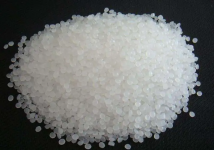read: 563 time:2025-06-15 03:08:53 from:化易天下
When comparing the strengths of different acids, chemists often refer to their ability to donate protons (H+) to a solution. The strength of an acid is typically measured by its dissociation constant (Ka) or its pKa value, with a lower pKa indicating a stronger acid. A common question in organic chemistry is: why is formic acid stronger than acetic acid? To answer this, we need to delve into the molecular structure and electronic effects that influence the acidity of these two compounds.
Formic acid (HCOOH) and acetic acid (CH3COOH) are both carboxylic acids, characterized by the presence of a carboxyl group (-COOH). However, their acidity differs significantly due to the nature of the substituents attached to the carboxyl group. In formic acid, the carboxyl group is directly attached to a hydrogen atom, while in acetic acid, it is attached to a methyl group (-CH3). The key to understanding why formic acid is stronger than acetic acid lies in how these substituents affect the stability of the conjugate base formed after the acid donates a proton.
The inductive effect refers to the electron-withdrawing or electron-donating properties of substituents attached to a molecule. In formic acid, the hydrogen atom attached to the carboxyl group does not exert any significant electron-donating effect. This allows the negative charge on the conjugate base (formate ion, HCOO-) to be more delocalized, which stabilizes the conjugate base and makes formic acid a stronger acid.
In contrast, the methyl group in acetic acid is an electron-donating group through its inductive effect. This donation of electron density makes the conjugate base (acetate ion, CH3COO-) less stable by increasing the electron density around the oxygen atoms. This decreased stability of the acetate ion makes it harder for acetic acid to lose a proton, hence, acetic acid is weaker compared to formic acid.
Resonance stabilization also plays a critical role in determining why formic acid is stronger than acetic acid. In both formic acid and acetic acid, the negative charge on the conjugate base can be delocalized between the two oxygen atoms in the carboxylate ion. However, in acetic acid, the additional electron-donating effect of the methyl group reduces the effectiveness of resonance stabilization. The result is that the acetate ion is less stabilized compared to the formate ion, contributing to the lower acidity of acetic acid.
In summary, why is formic acid stronger than acetic acid can be explained by considering the inductive effects and resonance stabilization of the conjugate bases. Formic acid, with its simple hydrogen substituent, lacks the electron-donating effects present in acetic acid, resulting in a more stable conjugate base and thus a stronger acid. Understanding these fundamental principles provides insight into the behavior of carboxylic acids and their reactivity in various chemical contexts.

Jincheng Petrochemical's 300000 ton polypropylene plant successfully trial production, 2024 polypropylene market analysis

The ABS market remains sluggish, what is the future direction?

Market differentiation of bisphenol A intensifies: prices rise in East China, while prices generally decline in other regions

The production method and process flow of silicone acrylic lotion, and what are the common raw materials